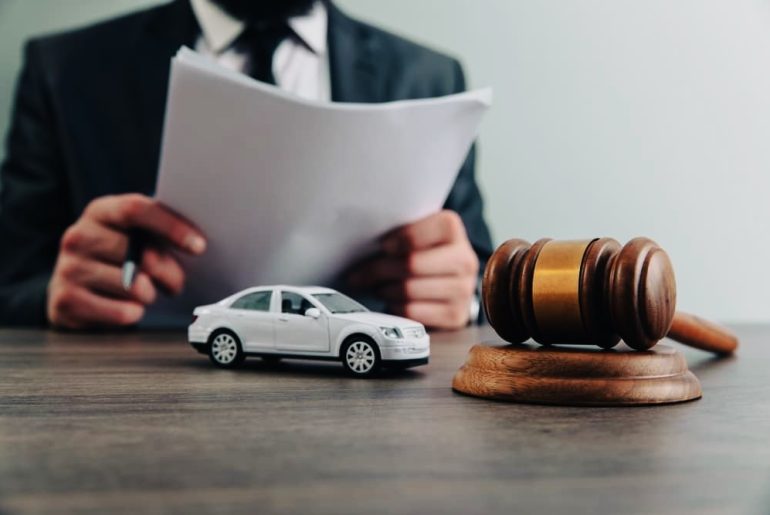California Vehicle Code section 21703 VC is the state law commonly addressing Rear-End Collisions. This section prohibits drivers from following other vehicles too closely, a practice known as tailgating. Tailgating is a frequent cause of rear-end car accidents. However, not all rear-end crashes result from tailgating; some are even the fault of the leading driver.
Main California Law on Rear-End Car Accidents
The main section in the California Vehicle Code (CVC) dealing with rear-end car crashes is 21703 VC. This law penalizes drivers who do not follow other vehicles at a safe distance, commonly known as tailgating, which is the most frequent cause of rear-end collisions. If the trailing driver receives a ticket for tailgating, they are likely to be held liable for the accident.
However, 21703 VC does not specify the exact distance considered too close. Instead, it forbids drivers from following “another vehicle more closely than is reasonable and prudent.” A reasonable and prudent following distance depends on:
- The speed of the vehicles
- Road conditions
- Weather conditions
- The stopping distances of the vehicles
- Any other relevant circumstances
If a driver is ticketed for tailgating after a rear-end crash, the leading driver can use the ticket as per se evidence of the trailing driver’s negligence in an accident case for compensation. This strongly indicates that the trailing driver’s conduct caused the crash and they should be held liable.
Violations of 21703 VC are traffic offenses in California, carrying a fine and other driving penalties. Tickets for tailgating result in:
- A $238 fine
- 1 point added to the driver’s record with the California Department of Motor Vehicles (DMV)
Points on a driver’s DMV record are reported to their auto insurer, potentially increasing insurance rates for several years.
Are there other important laws for rear-end accidents?
Yes, other sections in the California Vehicle Code can occasionally become factors after a rear-end collision.
California Vehicle Code 22350 VC: This law forbids drivers from going faster than is reasonable or safe, or at a speed that endangers others. Known as the state’s basic speed law, it can be invoked in a rear-end collision case if the trailing driver was traveling at an unsafe speed or above the speed limit. Additionally, it can be a factor if the leading driver suddenly slams on the brakes without reason, dropping their speed to a level that endangers other drivers.
California Vehicle Code 22100.5 VC: This law forbids making a U-turn unless it is safe to do so. It requires drivers making a left turn or a complete U-turn to yield the right-of-way to all oncoming vehicles. 22100.5 VC can be invoked after a rear-end crash if the driver making the U-turn did not provide enough time to regain speed after turning, causing a car in oncoming traffic to collide into the rear-end of the turning vehicle.
These laws, along with 21703 VC, play significant roles in determining fault and liability in rear-end collisions.
How Often Do These Auto Accidents Happen?
Rear-end collisions are among the most common types of vehicle accidents in the U.S. However, they are less likely to be fatal than some other types of accidents.
According to the National Highway Traffic Safety Administration (NHTSA), 29 percent of car accidents resulting in serious injury are rear-end collisions. However, the Insurance Information Institute (III) estimates that rear-end collisions only account for 7.2 percent of all roadway fatalities.
These statistics highlight the frequency and relative severity of rear-end collisions compared to other types of car accidents.
Is Tailgating Always the Cause of a Rear-End Collision?
While tailgating is the most common cause of rear-end crashes, it is not the only one. Sometimes, the driver of the car that gets hit in the rear can be at fault.
Examples of the rear driver causing a rear-end collision without tailgating include:
- Driving under the influence (DUI)
- Driving while distracted
- Trying to run a red light
Examples of the leading motorist causing a rear-end crash include:
- Deliberately braking suddenly in an act of road rage
- Driving with taillights or brake lights that do not work
- Reversing into the car behind them
- Merging onto a road or making a lane change when there is not room to do so safely
- Intentionally slamming on the brakes to cause a crash for insurance fraud
Determining how the accident happened is crucial for assigning fault and liability. A skilled personal injury lawyer or car accident lawyer from a local law firm can help victims file an injury claim. A car accident attorney can also help victims file an accident claim with their insurance company for compensation.
What are some common injuries in these crashes?
Rear-end collisions often cause certain types of injuries that are relatively rare in other accidents. Some of the most common injuries in rear-end accidents include:
- Whiplash
- Neck strains
- Strained or torn muscles in the core or around the ribcage
- Concussions from hitting the headrest
- Back injuries
These injuries can be debilitating and surprisingly difficult to treat. A local personal injury attorney can provide victims with the legal advice they need to recover compensation for their injuries and property damage.
